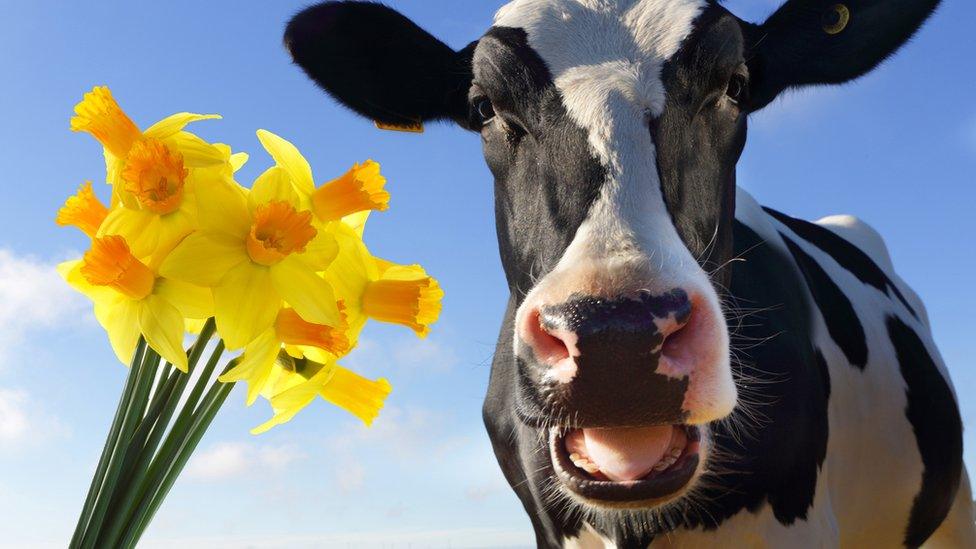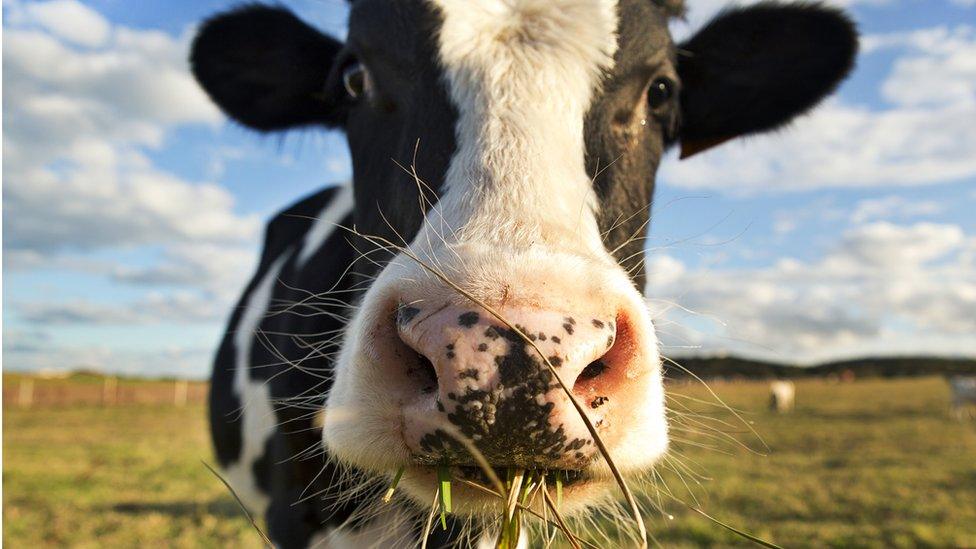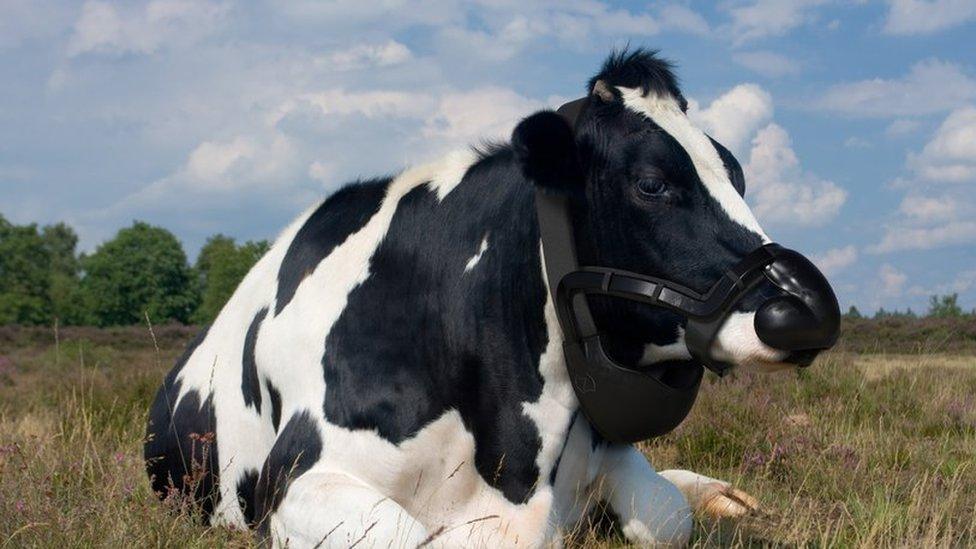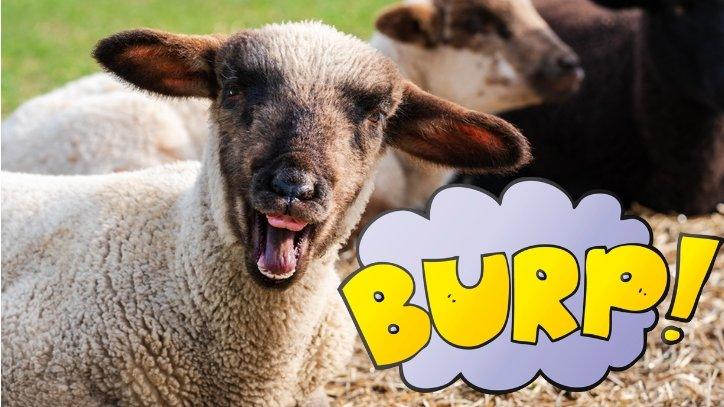Climate change: Could daffodils be a solution to methane produced by cows?
- Published

Tests show a chemical extracted from daffodils can reduce methane production by a third when added to cow feed.
Methane, a common greenhouse gas, is released by livestock like cows when they fart and burp.
Greenhouse gases like methane contribute to global warming and climate change.
In April the government announced plans to reduce greenhouse gas production from farming - including cows being given special products to limit the methane they produce.
It's also linked to the government's wider plans for the UK to reach specific climate targets. It previously said it would cut greenhouse gas emissions to almost zero by 2050.
Products - such as feed with daffodil extract - aimed at tackling the amount of methane produced from cows belches and wind could hit the market as early as 2025, a recent government report said.
Why is methane such a big problem?
Newsround's quick guide to climate change
Methane is what's known as a greenhouse gas. Other greenhouse gases include carbon dioxide, nitrous oxide and ozone.
These gases can be harmful to the Earth as they trap heat, making the planet warmer than it should be.
This process can also lead to other unwanted effects including rising sea levels, extreme weather and big shifts in weather conditions in some parts of the world.
The overall impact of these changes on the planet is what's known as climate change.
Around 40% of methane comes from natural sources like wetlands, but the bigger share comes from a a number of human activities, ranging from agriculture, such as cattle and rice production, to rubbish dumps.
What do cows have to do with it?

Cows are known to produce lots of methane
Animals like cows, goats and sheep are known to be some of the planet's biggest producers of the greenhouse house gas, methane.
It's released into the atmosphere when the animals burp and fart.
Half of the methane emissions in the UK come from cows, while they account for 14% of greenhouse gases globally.
Scientists say the world's 1.5 billion cattle, each producing up to 500 litres of methane a day, are big contributors to this.
Ways to limit the amount of methane cows produce is something which people have already begun to explore.
The suppressants - which could come from chemicals or natural substances like seaweed and garlic - can be ground into feed and given to animals.
In the UK, the National Farmer's Union welcomed plans to tackle methane but said the feed idea needed more research to make sure it worked and wasn't too expensive.
What is being used to reduce methane in cows?
The cows eating charcoal to save the planet! (2019)
In tests scientists from Scotland's Rural College successfully extracted a chemical from daffodils called haemantamine.
Using an artificial cow's stomach, they showed it could reduce emissions - gas released - by 30% when added to feed.
But this isn't the first product to have this effect.
Farmers in Australia fed their cows pink seaweed to help tackle the issue and limit the impact of these gases on climate change.
The seaweed contains chemicals which help to reduce the process known as enteric fermentation that takes place in the digestive system of cows and creates the gas methane.
Charcoal has also been used to make cattle greener. And last year, a team of students designed a special mask for cows aimed at reducing methane levels. It's said to neutralise the animals' emissions, limiting the impact of the gas on the planet.
- Published28 April 2022

- Published14 October 2022

- Published17 August 2019

